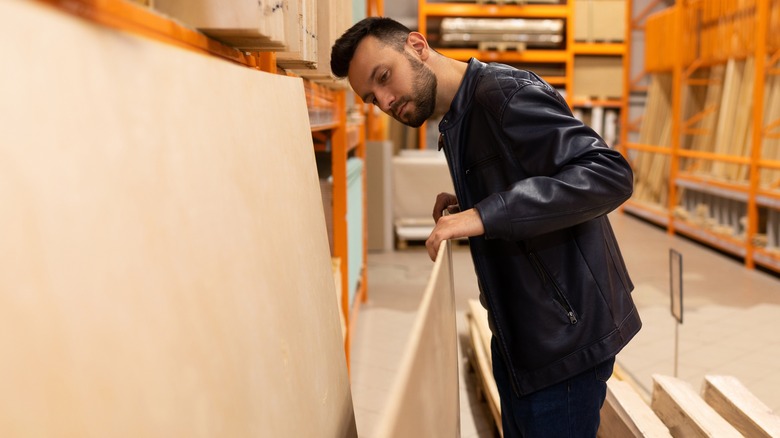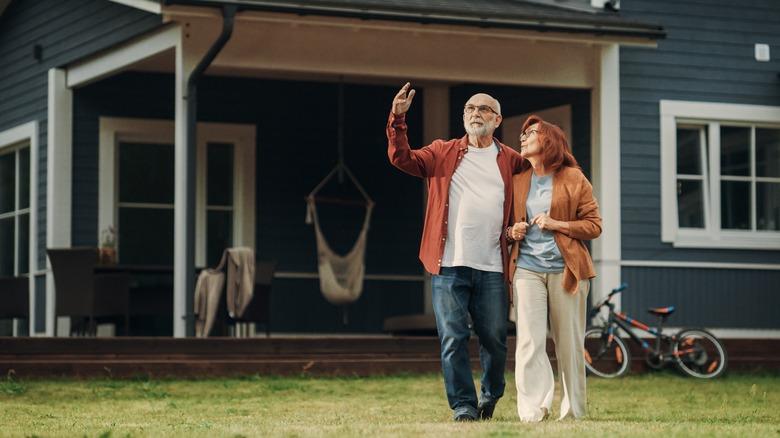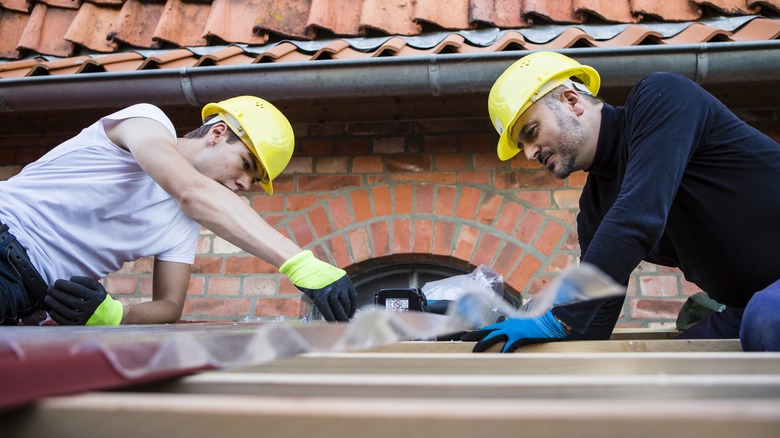Money-Saving Tips You'll Want To Know Before Building A Shed
If you're a homeowner with a decent amount of land or a hefty collection of home improvement tools, there may come a day when you find yourself in desperate need of a storage shed. Purchasing a prefabricated shed can make the process easier and faster, especially if you opt to have it delivered and installed by the business. But pre-built sheds aren't usually the cheapest or most durable option. The average cost of a prefabricated shed can range between $1,500 and $4,000, not including delivery or installation labor. For some, that number may seem unintimidating, but for others, it's hard to imagine spending a few grand on a place to stuff your dirty garden tools — especially if it's just made of cheap plywood.
If you're looking for an affordable, long-lasting shed, you may be better off building one yourself, but there are some hidden costs that can sneak up on you. To keep the cost price without sacrificing quality, you'll need to carefully weigh your options regarding shed size, location, materials, and labor. By planning carefully before you break ground on your new shed, you can potentially save thousands and end up with a sturdier, longer-lasting, and more aesthetically pleasing result than a pre-built shed. These are the expenses you need to consider in detail and steps you can take to save money on your shed build.
Location and design are obvious factors
If needed, start by obtaining a building permit for your shed, which HomeGuide says usually costs $50 to $300. Skipping this step could result in fees down the line. Next, evaluate your yard for the best shed placement in terms of cost and simplicity. If possible, start on level ground, as trying to build your shed on a slope will be more challenging and likely more expensive. Having level-ish ground can also allow you to build on blocks or pier and beam instead of pouring a concrete slab, potentially saving you hundreds or thousands. If you want lighting, wall outlets, or other electrical components within your shed, build the structure closer to your home to make it easier and cheaper to connect electricity. Otherwise, HomeGuide says you'll spend roughly $10 to $25 per linear foot to run electricity.
Shed design is just as important as location, so look for free shed DIY shed plans. In general, a smaller shed will be more affordable. For garden tools and basic yard supplies, an 8-foot by 10-foot shed should provide plenty of space. If you need room for a riding mower or other large equipment, a 10-by-12 or 10-by-16 shed is best. If your shed won't have any electrical power, you'll want to have at least one or two windows for lighting. To keep costs low, plan for a single-sloped roof instead of an A-frame or other structure.
Materials and labor can quickly add up
Use pressure-treated lumber for affordable and durable framing, then finish the walls and floor with exterior-grade plywood panels. You can save on money and maintenance by opting for vinyl or styrene windows instead of glass. One of the cheapest roofing materials is galvanized metal, as it's easy to install and made to last in all sorts of weather. Be sure to finish your shed with a healthy coat of exterior paint to protect it from the elements (Rust-Oleum's Painters Touch line is one of the most affordable and professionally trusted paint brands). When budgeting for materials, remember to include interior features like light fixtures, vents, workbenches, and shelving.
After you've made your materials list, you need to consider labor costs. Opting to do it yourself will save you money on labor, but can take a long time. If you think you'll need the extra hands, our final tip is to consider recruiting friends, family, or neighbors. Building a shed with their help won't just save you time, it'll also make the project more sentimental and create memories you can appreciate every time you step outside. While it can seem scary to ask for help, research suggests that people enjoy feeling helpful. "The truth is, most of us are deeply prosocial and want to make a positive difference in others' lives," says Stanford psychologist Xuan Zhao (via Stanford News), "People often feel happier after conducting acts of kindness."


